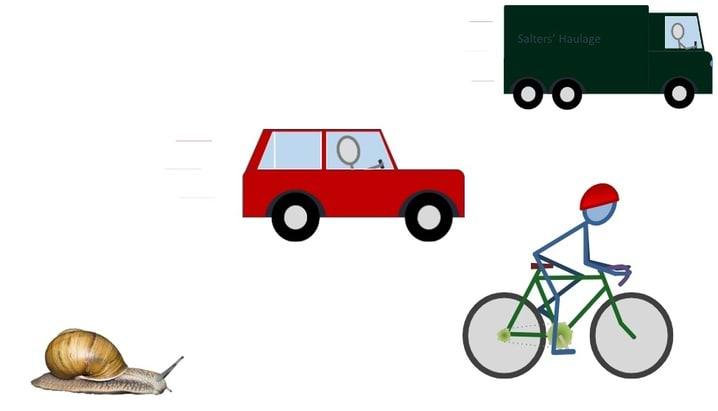Introducing and rehearsing vocabulary that allows students to describe observations accurately is an essential first step towards understanding motion. Students do not usually make a clear distinction between speed and acceleration. Often students do not use the word acceleration outside of their science lessons, and instead talk about speeding up or slowing down. Acceleration may be seen as ‘going fast’ (Driver et al., 1994).
These questions are designed to check students’ understanding of acceleration in a range of situations that they may find challenging.
Students should complete the question individually. This could be a pencil and paper exercise, or you could use an electronic ‘voting system’ or mini white boards and the PowerPoint presentation. The answers to the question will show you whether students understood the concept sufficiently well to apply it correctly.
If there is a range of answers, you may choose to respond through structured class discussion. Ask one student to explain why they gave the answer they did; ask another student to explain why they agree with them; ask another to explain why they disagree, and so on. This sort of discussion gives students the opportunity to explore their thinking and for you to really understand their learning needs.
Equipment
For the class:
- Metre ruler (a wooden ruler works well)
- Supports for each end of the ruler (e.g. piles of books)
- 2N weight (200g mass) – it is important that it is hard to detect flexing of the ruler when this weight is added, so its size may need to be adjusted to suit the particular equipment used.
- 10N weight (1kg mass)
Differentiation
You may choose to read the questions to the class, so that everyone can focus on the science. In some situations it may be more appropriate for a teaching assistant to read for one or two students.
Q1. Students commonly select the wrong answer B if they think of acceleration as ‘going fast’. If they recognise B has no acceleration a few students may choose answer D because they link (setting off from) rest with zero acceleration.
Q2. Is similar to Q1 but the situation is different.
Q3. Because both lorries are moving, students may revert to the misunderstanding that links going fast with acceleration to give answer B. Answer C indicates that they may be trying to combine this idea with the understanding that acceleration means a change of speed.
Q4. Tests whether students can apply the idea that acceleration is a change of speed to a decrease in speed. Answer D is likely because it is common for students to separate ideas of slowing down with acceleration. Students to persist in linking acceleration to going faster may choose A.
If students have misunderstandings about identifying acceleration in different situations, it can help to discuss with the class what happens to a car when it accelerates. It is easy to find video clips of cars accelerating that describe acceleration in terms of the time it takes to speed up from 0-60 mph, say. Discussing what this means in pairs or small groups could encourage social construction of new ideas through dialogue. Giving students the opportunity to write a definition of acceleration in their own words can consolidate learning and check individual understanding. This can be extended to explain why slowing down is also acceleration.
The following BEST ‘response activity’ could be used in follow-up to this diagnostic question:
- Response activity: Is it accelerating?
